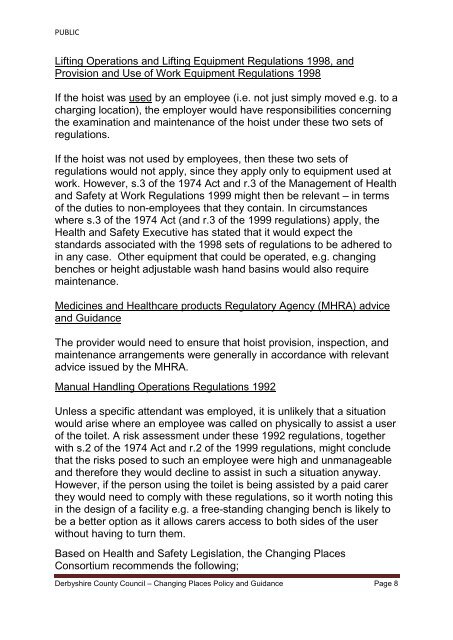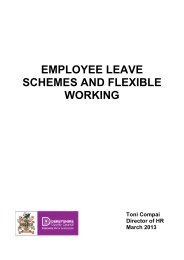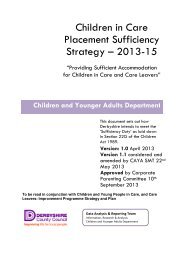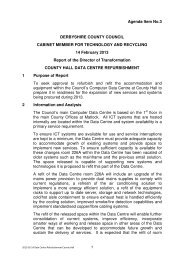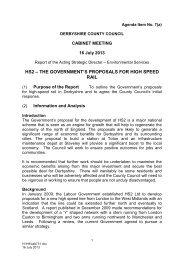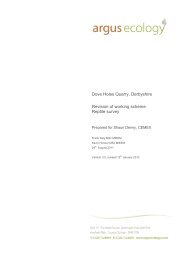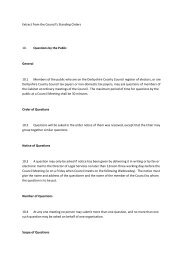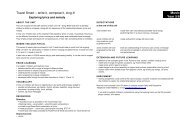Changing Places Policy and Guidance - Derbyshire County Council
Changing Places Policy and Guidance - Derbyshire County Council
Changing Places Policy and Guidance - Derbyshire County Council
You also want an ePaper? Increase the reach of your titles
YUMPU automatically turns print PDFs into web optimized ePapers that Google loves.
PUBLIC<br />
Lifting Operations <strong>and</strong> Lifting Equipment Regulations 1998, <strong>and</strong><br />
Provision <strong>and</strong> Use of Work Equipment Regulations 1998<br />
If the hoist was used by an employee (i.e. not just simply moved e.g. to a<br />
charging location), the employer would have responsibilities concerning<br />
the examination <strong>and</strong> maintenance of the hoist under these two sets of<br />
regulations.<br />
If the hoist was not used by employees, then these two sets of<br />
regulations would not apply, since they apply only to equipment used at<br />
work. However, s.3 of the 1974 Act <strong>and</strong> r.3 of the Management of Health<br />
<strong>and</strong> Safety at Work Regulations 1999 might then be relevant – in terms<br />
of the duties to non-employees that they contain. In circumstances<br />
where s.3 of the 1974 Act (<strong>and</strong> r.3 of the 1999 regulations) apply, the<br />
Health <strong>and</strong> Safety Executive has stated that it would expect the<br />
st<strong>and</strong>ards associated with the 1998 sets of regulations to be adhered to<br />
in any case. Other equipment that could be operated, e.g. changing<br />
benches or height adjustable wash h<strong>and</strong> basins would also require<br />
maintenance.<br />
Medicines <strong>and</strong> Healthcare products Regulatory Agency (MHRA) advice<br />
<strong>and</strong> <strong>Guidance</strong><br />
The provider would need to ensure that hoist provision, inspection, <strong>and</strong><br />
maintenance arrangements were generally in accordance with relevant<br />
advice issued by the MHRA.<br />
Manual H<strong>and</strong>ling Operations Regulations 1992<br />
Unless a specific attendant was employed, it is unlikely that a situation<br />
would arise where an employee was called on physically to assist a user<br />
of the toilet. A risk assessment under these 1992 regulations, together<br />
with s.2 of the 1974 Act <strong>and</strong> r.2 of the 1999 regulations, might conclude<br />
that the risks posed to such an employee were high <strong>and</strong> unmanageable<br />
<strong>and</strong> therefore they would decline to assist in such a situation anyway.<br />
However, if the person using the toilet is being assisted by a paid carer<br />
they would need to comply with these regulations, so it worth noting this<br />
in the design of a facility e.g. a free-st<strong>and</strong>ing changing bench is likely to<br />
be a better option as it allows carers access to both sides of the user<br />
without having to turn them.<br />
Based on Health <strong>and</strong> Safety Legislation, the <strong>Changing</strong> <strong>Places</strong><br />
Consortium recommends the following;<br />
<strong>Derbyshire</strong> <strong>County</strong> <strong>Council</strong> – <strong>Changing</strong> <strong>Places</strong> <strong>Policy</strong> <strong>and</strong> <strong>Guidance</strong> Page 8


